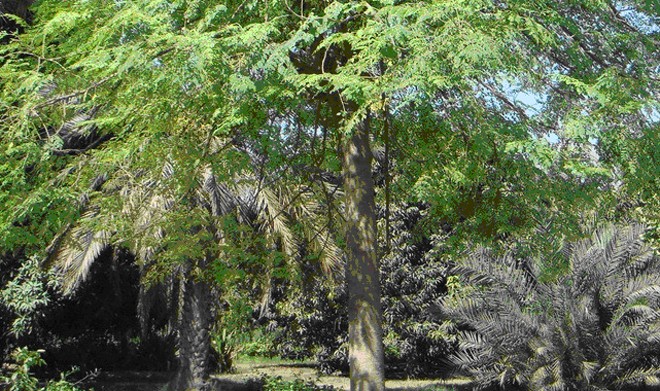

My mother used to love trees. Having spent a large part of her life in Lahore in the beautiful Railway colonies of Canal Bank and Mayo Gardens, she was always surrounded by trees and shared an almost sacred bond with them. So, I knew that the best way to honour her memory was to plant trees in her name. However, I thought it had to be a tree which matched her personality, because well, trees have personalities too!
My first thought was of a tree like Gul Mohar or Amaltaas, because they are both beautiful just like she was, a pure joy to behold. Then I thought of Peepal and Sukh Chein as their dense shade gives peace and comfort, as she did. The Banyan which symbolises wisdom and enlightenment and, in Hindu mythology, is called the ‘wish-fulfilling tree’ could have been an equally worthy tribute.
But then I read about the Moringa tree -- Suhanjana in Urdu -- and also called the ‘Tree of life’ or the ‘Miracle tree’. I discovered it on a Facebook forum where a gentleman had shared his effort of preparing hundreds of saplings for free distribution. The more I read about it the more it seemed to me that Moringa should be my mother’s tree.
I read the story of a Haitian volunteer who while touring some botanical gardens, enquired about a tree with long drumsticks of seed pods. The tour guide excitedly told her about Moringa and how each part of the tree could be used for food or medicines. The young volunteer began to cry. She told the guide that she had recently worked in an orphanage where as many as five children a week would die of starvation.
Moringa was growing in the compound at the orphanage and no one knew that it had any use beyond providing shade. No one knew that the leaf powder was so nutritious that mixed with water or added to cooked rice or porridge it could have saved the lives of those children.
The story struck a chord. This year we have heard the stories about our own children in Thar, dying of starvation and malnutrition. Moringa is a native in that area. In fact, one of the intriguing facts about this tree is that if you take a world map with the regions where hunger and malnutrition are the most prevalent, and a map where Moringa will grow best, the two maps are almost identical.
Importantly for us, Moringa is a fast growing tree and grows easily in harsh weather and even in drought. One of its names is ‘Never Die’ because of its incredible ability to survive.
Moringa roots, called "suhanjanay ki moolian," are harvested for pickles. The fruit, which is a long pod, is also used in pickles. The buds are commonly cooked like kachnar. The tree produces masses of very small leaflets that are boiled and eaten like spinach. The leaflets sun-dry in just a few hours and can then be stored for the off-season, a time when dietary minerals and vitamins are often scarce.
Since dirty water is a cause of many diseases in Pakistan, especially among children, Moringa seeds can be used to make water safer for drinking and cooking and also pressed to produce oil.
I thought Moringa was indeed a tree that gave life. They say one who plants a tree plants a hope. Well, I planted a prayer; that just like my mother this tree may be a source of comfort and strength for those who need sustenance and a healing touch.
Ounce for ounce, this is how dried Moringa leaf powder, compares with other foods:
7 times the Vitamin C that is in oranges
4 times the Calcium, 2 times the protein that is in milk
4 times the Vitamin A that is in carrots
3 times the Potassium as that is in bananas
3 times the Iron that is in spinach
Moringa is considered to have the highest protein ratio of any plant so far studied on earth. It contains all essential amino acids and can be a good substitute for meat
According to the latest National Nutrition Survey of Pakistan, besides acute and chronic malnutrition in children, a large percentage of women and children suffer from Vitamin A deficiency causing blindness and from iron deficiency anaemia, causing multiple complications. Plantation and awareness of Moringa can provide a partial local solution.